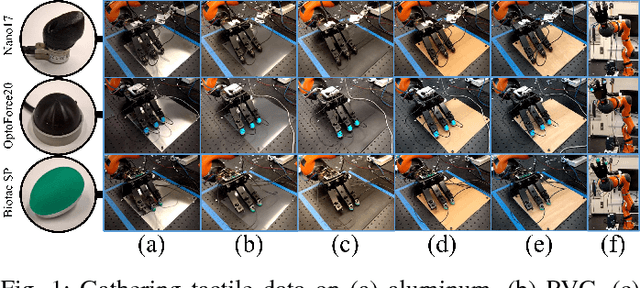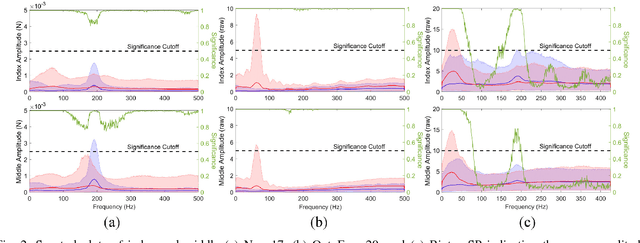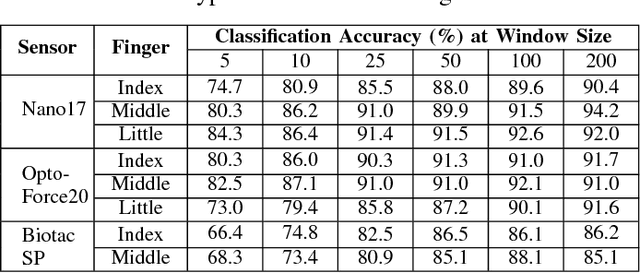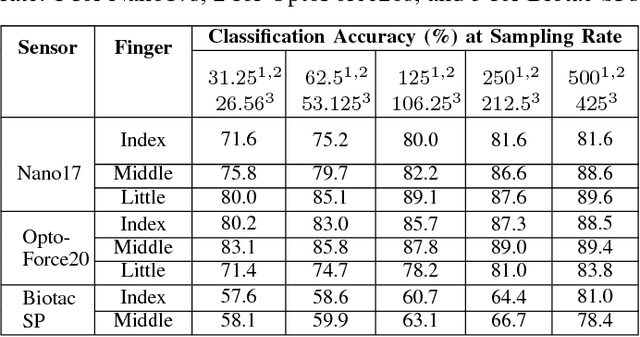Slip Detection: Analysis and Calibration of Univariate Tactile Signals
Paper and Code
Jun 27, 2018



The existence of tactile afferents sensitive to slip-related mechanical transients in the human hand augments the robustness of grasping through secondary force modulation protocols. Despite this knowledge and the fact that tactile-based slip detection has been researched for decades, robust slip detection is still not an out-of-the-box capability for any commercially available tactile sensor. This research seeks to bridge this gap with a comprehensive study addressing several aspects of slip detection. Key developments include a systematic data collection process yielding millions of sensory data points, the generalized conversion of multivariate-to-univariate sensor output, an insightful spectral analysis of the univariate sensor outputs, and the application of Long Short-Term Memory (LSTM) neural networks on the univariate signals to produce robust slip detectors from three commercially available sensors capable of tactile sensing. The sensing elements underlying these sensors vary in quantity, spatial arrangement, and mechanics, leveraging principles in electro-mechanical resistance, optics, and hydro-acoustics. Critically, slip detection performance of the tactile technologies is quantified through a measurement methodology that unveils the effects of data window size, sampling rate, material type, slip speed, and sensor manufacturing variability. Results indicate that the investigated commercial tactile sensors are inherently capable of high-quality slip detection.
 Add to Chrome
Add to Chrome Add to Firefox
Add to Firefox Add to Edge
Add to Edge